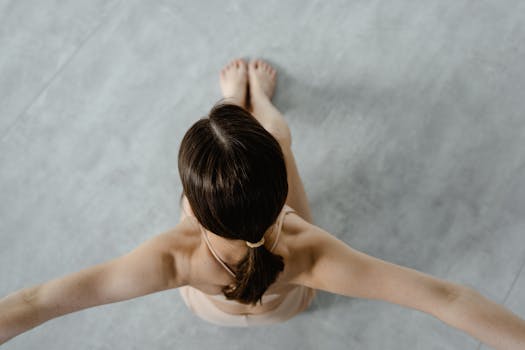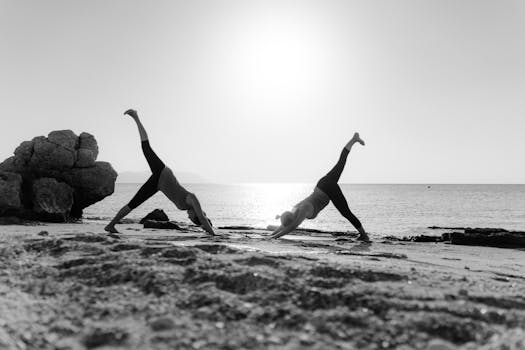![thumbnail[1]](https://shine-magazine.com/wp-content/uploads/2024/04/shine-magazine.com-embracing-serenity-top-evasion-retreats-to-reset-your-soul-thumbnail1-jpeg.webp)
Beginner’s Guide to Yoga: Poses and Practices to Start Your Journey
Takeaways: Yoga is a holistic practice that encompasses physical, mental, and spiritual well-being. This guide will introduce you to essential yoga poses and practices, providing a solid foundation for your yoga journey. By integrating these practices into your routine, you can enhance your flexibility, strength, and mindfulness.
Yoga is more than just a form of exercise; it’s a way of life that promotes balance, flexibility, and inner peace. If you’re new to yoga, you may feel overwhelmed by the variety of styles and poses available. This beginner’s guide aims to simplify your entry into the world of yoga by introducing you to essential poses and practices that will help you cultivate a rewarding yoga practice.
Understanding the Basics of Yoga
Yoga originated in ancient India and has evolved into a popular practice worldwide. It combines physical postures, breathing techniques, and meditation to promote overall well-being. As a beginner, it’s essential to understand the different aspects of yoga:
- Asanas: These are the physical postures you will practice. Each pose has specific benefits for your body and mind.
- Pranayama: This refers to breath control. Breathing techniques help enhance your lung capacity and promote relaxation.
- Meditation: A mental practice that encourages mindfulness and self-awareness.
- Philosophy: Yoga is rooted in ancient philosophy, which teaches principles of living a balanced life.
Essential Yoga Poses for Beginners

1. Mountain Pose (Tadasana)
This is a fundamental standing pose that promotes good posture and grounding. Stand tall with your feet together, arms by your sides, and take deep breaths.
2. Downward-Facing Dog (Adho Mukha Svanasana)
This pose stretches your entire body. Start on your hands and knees, then lift your hips up and back, forming an inverted V shape.
3. Child’s Pose (Balasana)
A restorative pose that provides relaxation. Kneel on the floor, sit back on your heels, and stretch your arms forward while lowering your forehead to the ground.
4. Warrior I (Virabhadrasana I)
This pose builds strength and confidence. Stand with legs apart, turn one foot out, and bend the knee while raising your arms overhead.
5. Cat-Cow Stretch (Marjaryasana-Bitilasana)
A gentle flow between two poses that warms up the spine. On your hands and knees, alternate between arching your back (Cat) and dipping it (Cow).
These poses can be practiced daily and are great for improving flexibility and strength. To enhance your practice, consider joining a local yoga class or exploring online resources. Websites like Yoga Journal and DoYouYoga offer tutorials and tips for beginners.
Creating a Yoga Practice Routine

- Set a Schedule: Dedicate specific times during the week for your yoga practice. Consistency is key.
- Start with Short Sessions: Begin with 15-20 minutes and gradually increase the duration as you become more comfortable.
- Incorporate Breathing Techniques: Spend a few minutes focusing on your breath before and after your poses.
- Listen to Your Body: Pay attention to how your body feels during practice. Never push yourself into discomfort.
- Use Resources: Consider using apps like YogaGlo or Soulvana for guided sessions.
Conclusion
Embarking on your yoga journey can be a fulfilling experience that promotes physical health and mental well-being. By practicing essential poses and establishing a routine, you can cultivate a deeper connection with yourself. Remember, yoga is about progress, not perfection. Embrace each moment on your mat, and enjoy the journey toward a healthier, more balanced life. For more insights on yoga and wellness, explore resources like Yoga Journal and Verywell Fit.





